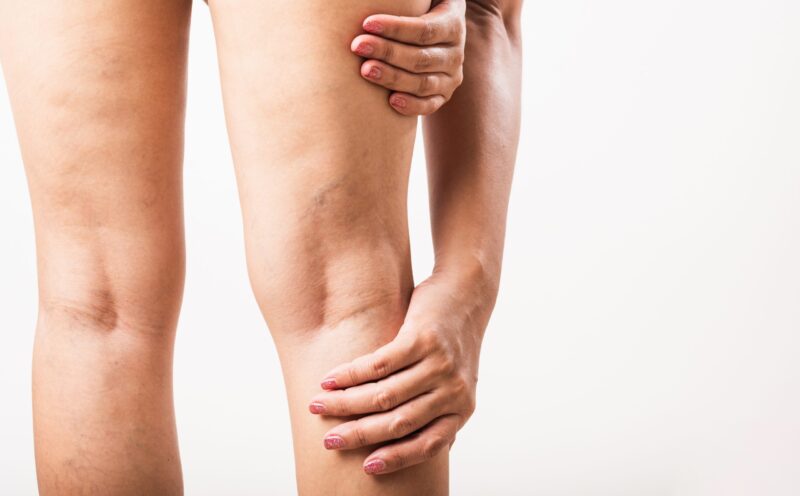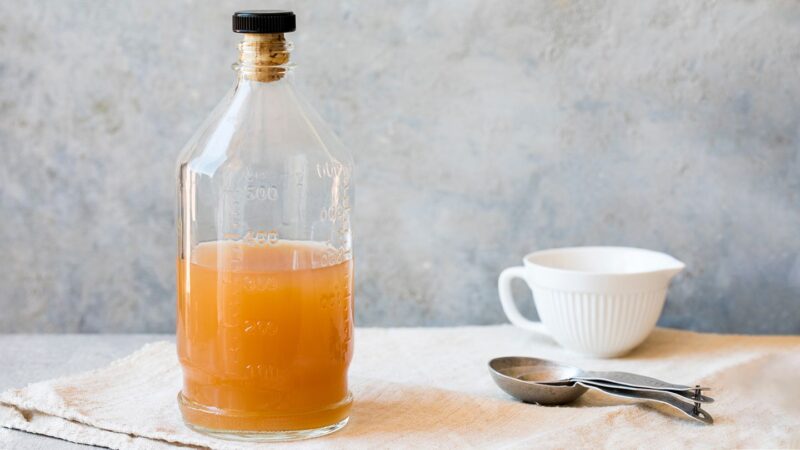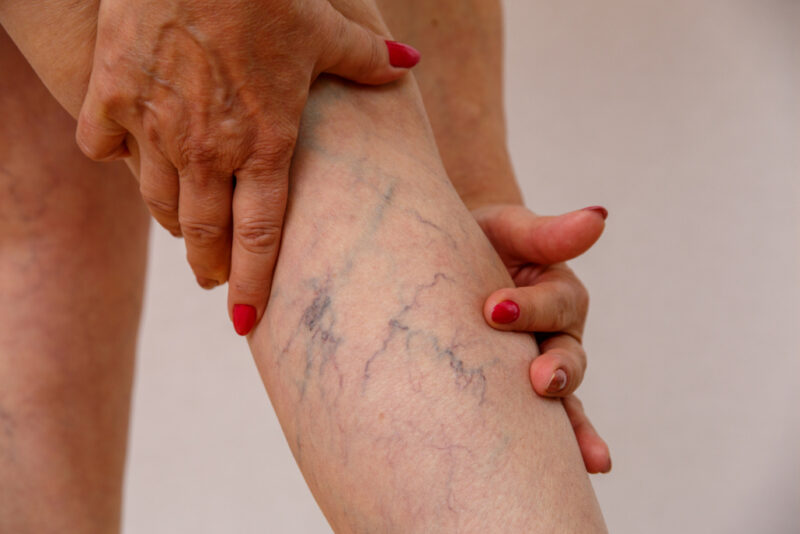Varicose veins are blood vessels that have become abnormally enlarged, often due to poor circulation. They can become twisted, appear blue or dark purple in color, and sometimes protrude from the surface of the skin. Varicose veins most commonly occur in the legs and feet, but can also be found in other parts of the body including on the face.
What Are The Symptoms?
Symptoms of varicose veins include:
- Swollen and twisted blue-purple or red-veined appearing on the legs or other parts of the body
- Long twisted bulging veins
- Burning, throbbing, muscle cramping, and heaviness in affected areas
- Itching around one or more affected vein
- Restlessness and fatigue in your legs after standing for extended periods
- Dryness and flaking skin on the swollen area
- Brown discoloration of skin near the affected area
- Ankle swelling (edema)
Diagnosis

A diagnosis will be based on a physical exam and medical history. During the physical exam, your doctor may press on your legs to check for weak valves and examine the size and position of the veins in your legs. In some cases, an imaging test such as ultrasound may be used to see the veins more clearly and determine if any blood is pooling in them.
Your doctor might recommend certain lifestyle changes and some kind of varicose veins treatment that can help lessen the symptoms.
What Causes this Condition?
The most common cause of varicose veins is an inherited weakness of the vein walls or valve malfunctions that prevent blood from flowing in a single direction along your legs. This causes the blood to back up in your veins which can lead to swelling, bulging, and discoloration.
Other risk factors for varicose veins include aging, having a sedentary lifestyle, pregnancy, or obesity. Varicose veins can also be caused by long periods of standing or sitting in one position, wearing tight clothing on the legs or abdomen and any type of injury that causes damage to the valves within your veins.
Treatment Options
This condition can be treated in different ways and the best option for you depends on the severity of your condition.
Sclerotherapy

This medical procedure injects a chemical solution into the vein to close it off and redirect blood flow to healthier veins. Over time, this treatment reduces the appearance of varicose veins on the surface of your skin.
Laser treatment
This small incision surgery uses lasers to deliver heat directly into malfunctioning vessels and seals them off from blood flow – reducing their appearance without scarring your skin surface.
Surgical Procedures
If you have severe varicose veins that don’t respond to lifestyle changes or other treatments, you may need a surgical procedure such as venous stripping (removing the entire vein from your leg) or endovenous laser treatment (closing off a damaged vein with a laser fiber). In general, endovenous laser treatment is preferred over venous stripping since it is less invasive and is more effective at treating larger varicose veins. Additionally, recovery time is quicker after endovenous laser treatment compared to venous stripping.
It’s important to talk with your vein doctor about the available treatment options before making any decisions. Your doctor will discuss all potential risks associated with each option and guide you toward what’s best for you given your individual health needs.
Best Home Remedies

To you want to reduce the appearance of your varicose veins or alleviate the discomfort they cause, you may want to try some home remedies before considering medical options such as surgery or sclerotherapy. Home remedies for varicose veins include:
Exercise
Moderate physical activity can improve circulation in your legs and help with symptoms of varicose veins. Regular exercise will also help reduce pressure on your leg muscles which increases blood flow; this can help reduce leg swelling caused by fluid buildup from damaged valves within blood vessels that accompany varicose or spider veins.
Compression stockings
Compression stockings provide extra support for the walls of weakened vessels, promoting better blood flow throughout the entire legs and diminishing strain in the affected area(s). Medical grade compression stockings come in adjustable levels ranging from light to strong depending on the intended use; consult a specialist if you don’t know what grade may best suit your situation prior to purchasing one yourself.
Elevation
If possible throughout the day, elevate your legs above heart level when sitting down or lying down; this helps promote better circulation through lower extremities during periods of rest or leisure activity by angling them slightly upwards while they hang free over an edge while in use – helping reduce symptoms related with any possible condition regarding vessels located within legs (highly recommended after completed exercises).
Apple Cider Vinegar (ACV)

Apple cider vinegar has long been praised for its health benefits due to its powerful antioxidants which help improve circulation throughout your body. Adding two tablespoons into your warm bathwater or drinking one teaspoon with a glass of water twice daily can help relieve painful symptoms associated with varicose veins like throbbing or cramping in your legs.
Cucumber
Cucumbers are fantastic at helping to reduce abdominal bloating as well as reduce swelling in the legs caused by fluid retention associated with varicose veins. This is due to their high water content which helps flush out toxins from your system. Additionally, they contain a wealth of vitamins and minerals that help tone down inflammation while providing plenty of essential hydration for your skin cells.
Massage Therapy

Massage therapy has long been praised for its ability to stimulate circulation throughout the body; leading many with varicose veins to turn towards certified masseurs using Swedish massage techniques specifically designed to ease symptoms related to spider/varicose vein pain & discomfort within a few sessions only!
Conclusion
Varicose veins can be a nuisance, however, there are ways to lessen their appearance and find relief from discomfort. While medical treatments and surgery may provide long-term solutions, following some of the tips discussed here may provide quick relief or even reduce their appearance.
It is highly recommended to practice healthy lifestyle habits such as exercising regularly, wearing compression stockings, and avoiding prolonged standing or sitting. Dietary changes such as limiting dietary salt intake, and eating food high in antioxidants and flavonoids can also be beneficial in managing varicose veins. Additionally, massages, hot compresses, and other home remedies can work in conjunction with the advice of a doctor to further reduce discomfort.

